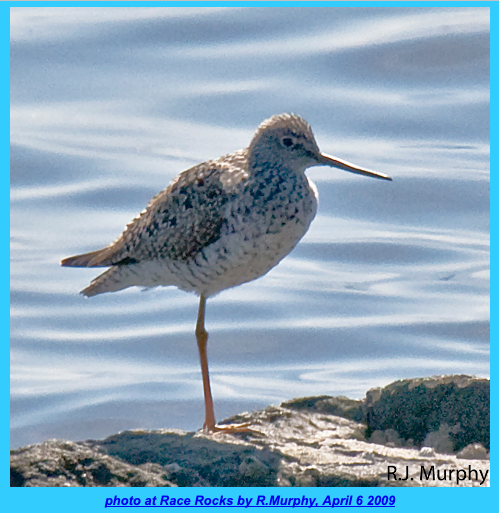
Tringa melanoleuca at Race Rocks Photo R. Murphy
Although this species was first photographed at Race Rocks in 2009, it is a relatively common shorebird that occurs in large numbers when migrating through this area from March to May. Their breeding habitat is bogs and marshes in the boreal forest region of Canada and Alaska, nesting on the ground, in well-hidden locations near water. ( Wikipedia)
David Allinson of the Rocky Point Bird Observatory comments :”This is a moulting into breeding Greater Yellowlegs . Note the legs look pretty yellow to me (but at this time of year and in certain light they can look orangeish). Lots of both Tringa’s are moving through our area right now…(For Greater Yellowlegs, listen for their loud ‘tiew, tiew, tiew’ calls, esp. when in flight…but Lesser’s should be fairly uncommon out there… (they prefer mudflats over rocks; whereas Greater’s can be seen on either).
Domain Eukarya
Kingdom Animalia
Phylum Chordata
Subphylum Vertebrata
Class Aves
Order Charadriiformes
Family Scolopacidae
Genus Tringa
Species melanoleuca
(Gmelin, 1789)
Common Name: Greater Yellowlegs
Other Members of the Class Aves at Race Rocks.
and Image File |
| April 2009 Ryan Murphy |













